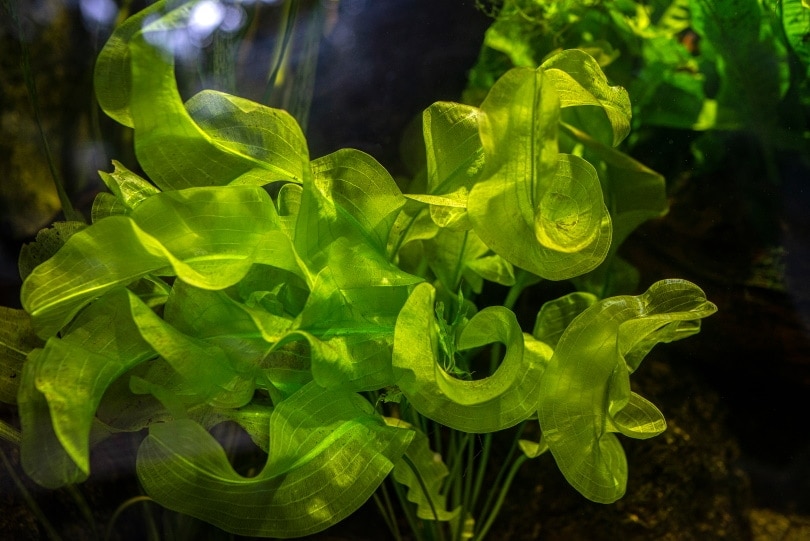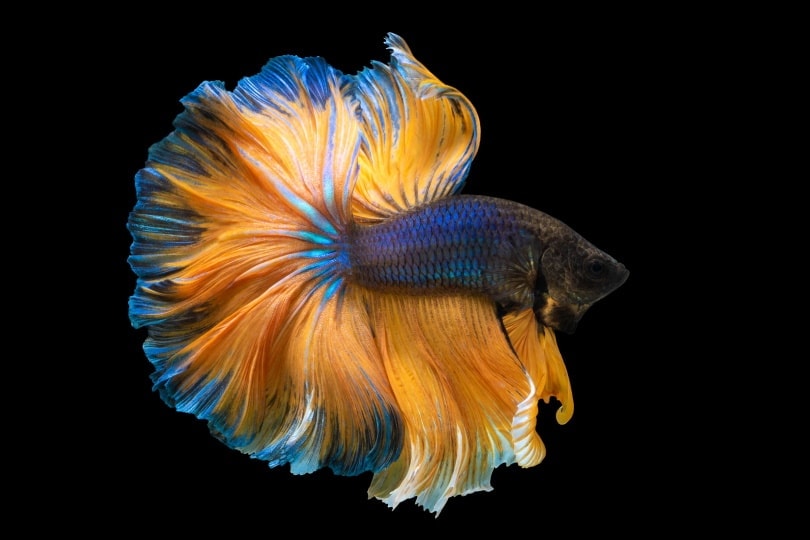Yellow Betta Fish: Care Guide, Pictures, Varieties, Lifespan & More
Updated on
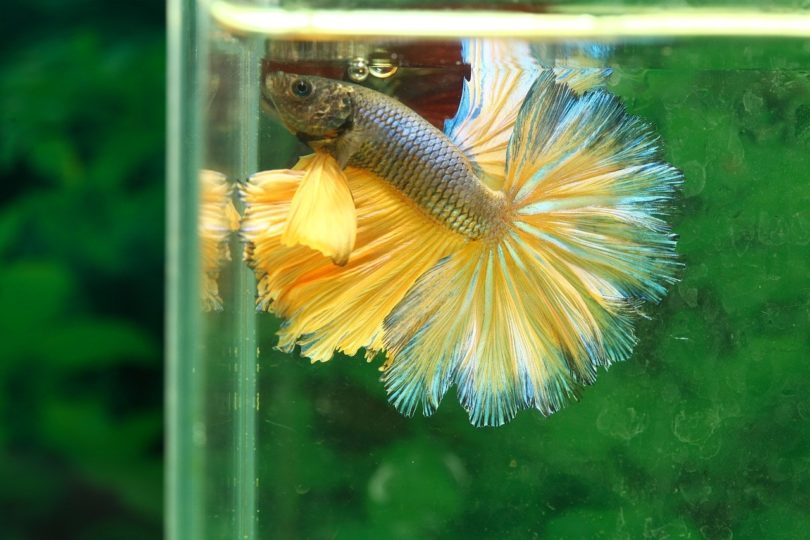
Click to Skip Ahead
The Betta fish, also known as the Siamese fighting fish, was first discovered in Southeast Asia in small ponds, slow-moving streams, and flooded rice paddies. The Yellow Betta Fish is one of the most common Betta colorations, although that doesn’t make them any less beautiful! They are also known as “non-red” because they exhibit many similar characteristics except for their coloring.
Caring for a yellow Betta is not much different than caring for most other Betta variations, although there are a few unique challenges. Read on for more information on this beautiful Betta.
Quick Facts about Yellow Betta Fish
| Species Name: | Betta splendens |
| Family: | Gourami |
| Care Level: | Moderate |
| Temperature: | 75 – 80 degrees Fahrenheit |
| Temperament: | Mostly peaceful, but prone to aggressive behavior |
| Color Form: | Yellow, non-red |
| Lifespan: | 2 – 5 years |
| Size: | 2 – 2.5 inches |
| Diet: | Carnivorous |
| Minimum Tank Size: | 3 gallons |
| Tank Set-Up: | Warm water, filtration, plants |
| Compatibility: | Can be tankmates with smaller, shoaling fish |
Yellow Betta Fish Overview
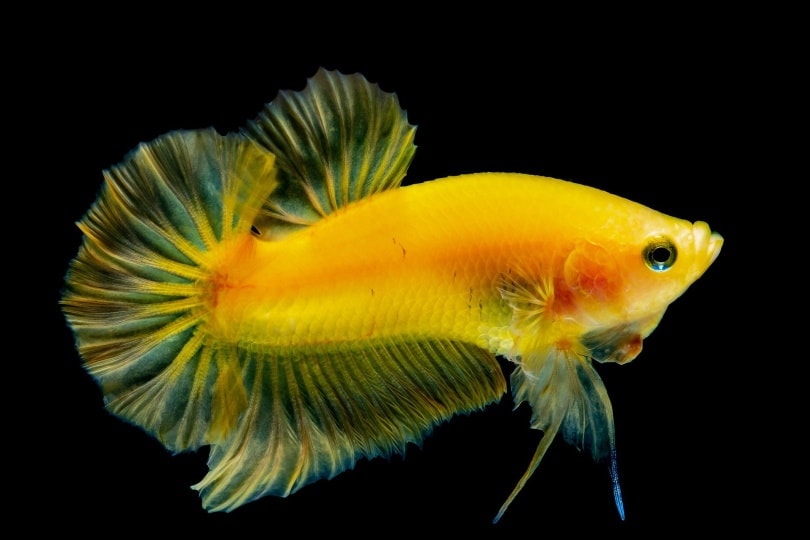
Betta fish got their name from an ancient clan of warriors, the “Bettah,” named after their unique tendency to fight. The sport of Betta Fish fighting become so popular in Thailand that the former king eventually had it taxed and regulated!
Betta Fish are not schooling fish and prefer their own space, and Bettas housed together will undoubtedly end up fighting. This is why Betta fish are often found in small bowls or decorative vases alone, although they can be housed with schools of other smaller fish, provided that there are enough of them. They are labyrinth fish, meaning they can breathe oxygen directly from the air and through their gills. As a result, they are hardy fish that can easily live in oxygen-deficient water and small spaces.
How Much Do Yellow Betta Fish Cost?
Yellow Bettas are fairly common and thus aren’t prohibitively expensive. They can easily be found in pet stores for around $15 and don’t usually go for more than $30. Some rare Betta colorations can go for up to $500, though, and a Betta with the colors of the Thai national flag recently sold for $1,530 at auction!
Typical Behavior & Temperament
Bettas are surprisingly intelligent and keenly aware of their environment. They are interactive fish that will follow their owners around the tank. They enjoy exploring their tank and will claim their own personal areas and are even known to develop unique personalities.
Bettas are also well-known for being aggressive and fighting, although, on the whole, they are actually peaceful fish. If Bettas get bored or are exposed to colorful fish with long tails and fins or if males are housed with other males, they tend to bite and fight but are otherwise fairly docile.
Appearance
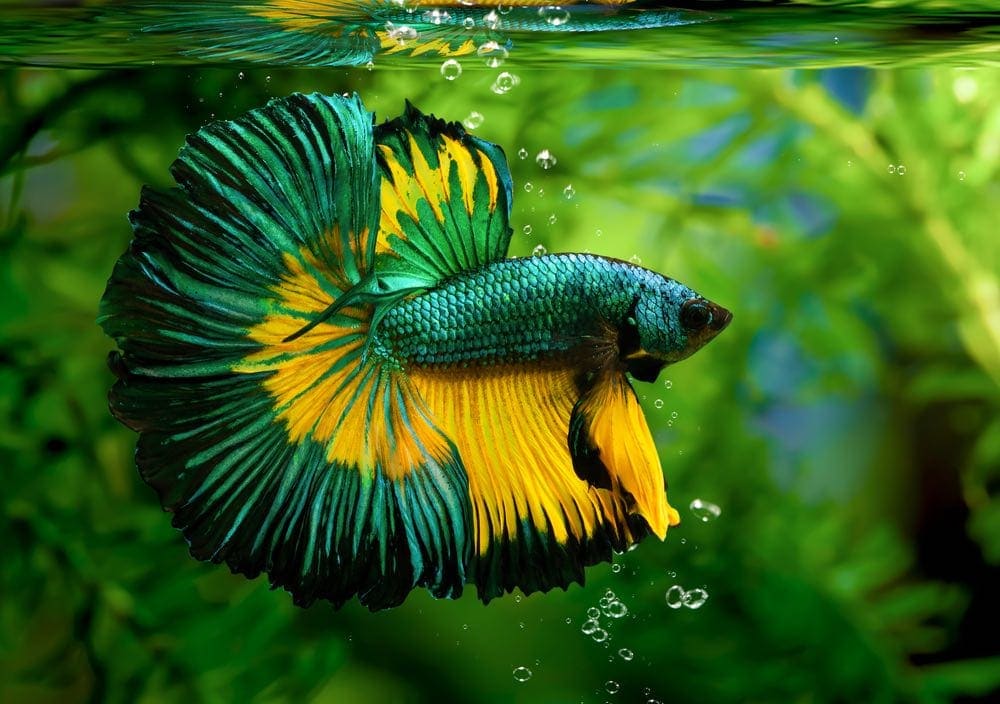
There are more than 70 species of wild Betta fish, and through selective breeding for the fish trade, there are now hundreds of color varieties, and the list keeps growing. Different species can be found with gorgeous flowing tails and fins, unique body shapes, and almost any color combination that you can imagine.
Yellow Bettas are fairly common but somewhat challenging to breed. They have a bright lemon-yellow body and fins. There are a few variations of yellow Bettas, including the pineapple Betta, which has the same yellow or orange body, with black lines outlining its scales, giving them a pineapple-like appearance.
How to Take Care of Yellow Betta Fish
While Bettas are hardy fish that can live in various environments, the better the quality of their tank and water, the healthier they’ll be. There is a misconception about Bettas that they can live in tiny bowls alone and be happy, but this is not the case. They need plenty of space, plants, and clean water, just like any other fish species.
Habitat, Tank Conditions & Setup
Tank

The minimum tank size for a Betta is 5 gallons, but the bigger, the better. The tank should be placed away from direct sunlight but still in a place where it gets some light, like near a window. Glass tanks are best because they are easy to clean and give you a good view of your fish.
Filter & heating
Betta fish in the wild generally live in still water, but a gentle filter is still essential. It will help keep your tank clean and reduce the amount of potentially harmful bacteria that can cause illness. The natural environment of Bettas is in the warm waters of Thailand, so you’ll need a heater too. A submersible heater is ideal, and you should aim to keep the tank at around 78–80 degrees Fahrenheit.
Substrate and plants
While Bettas spend most of their time close to the surface, they are often seen cruising the bottom of the tank too. Small, smooth gravel loaded with live plants is ideal because it won’t hurt your Betta. Bettas love to have plants and leaves to hide in, and live plants will also help keep your tank clean and healthy.
Lighting
Your Betta will need a standard day/night cycle of lighting, but you should try to avoid lighting that is too intense because it can promote the growth of algae. LED lights are best, as they are not too bright and don’t use much energy. An automatic timer is a small and inexpensive device that will save you the hassle of switching the lights on and off every day.
Are Yellow Betta Fish Good Tank Mates?
Male Yellow Betta fish should never be kept with other males because they will most likely fight. If you have a group of females, you may be able to keep multiple males together without incident, but this is still no guarantee. Also, avoid keeping Bettas with other brightly colored fish or fish that have long, flowing tails because they will view them as competition.
Fish that inhabit different areas of the tank and smaller groups of schooling fish are usually fine to keep with Bettas. If you are adding Bettas to an already established tank, try to get young Bettas if possible and introduce them slowly. Lastly, make sure there is plenty of space for them because cramped conditions can also cause fighting.
What to Feed Your Yellow Betta Fish
Betta fish are carnivores, and in the wild, they hunt small insects, larvae, and eggs from the water’s surface. Specific pellets made for Betta fish are the best food for them because these contain all the vital nutrients that they need to stay healthy. Check the ingredients, and make sure it has an overall protein content of at least 40%. Bloodworms are a great treat for them occasionally too.
Two small meals a day are enough for Betta fish. You must be extra careful not to overfeed them because this can make them seriously ill and even kill them.
Keeping Your Yellow Betta Fish Healthy
The best way to keep your Betta Fish healthy is to keep their environment clean and hygienic, with plenty of plant life, light, space, and adequate filtration. A proper diet is also essential because this is the basis of good health for your fish. If your Betta is active and swimming around, has strong and vibrant colors, feeds readily, and has their fins held open but not taut, you can be sure they are happy and healthy. A healthy Betta can easily live for 5 years or more; Bettas in small, cramped fishbowls rarely live beyond 2–3 years.
Breeding
Breeding Bettas can be tricky for beginners, and it’s vital to research the process thoroughly before attempting it to avoid ending up with sickly fry (babies). Your breeding pair will need a separate tank with specific conditions because fry are highly sensitive and need pristine water conditions to grow. In the wild and captivity, males will look after fry until they are free-swimming. At this point, you can remove the male from the breeding tank.
Choosing the right breeding pair is arguably the most important part of breeding because you’ll want them to be healthy and active. Only buy Bettas from reputable breeders to ensure that they are healthy enough to breed.
Are Yellow Betta Fish Suitable for Your Aquarium?
Betta fish are beautiful fish to add to your aquarium and will add a unique element that no other species can provide. They can easily live for up to 5 years, and some have even been recorded living well into their teens. They are great for beginners and experts alike because they are easy to provide and care for, and they are not at all demanding fish, considering their unique beauty.
While they have a reputation for being aggressive at times, if you take the right precautions, they are generally gentle, docile fish that won’t cause too much trouble in your aquarium. If you have a large enough tank, there is no reason to add a few of these gorgeous fish to your aquarium!
See also:
Featured Image Credit: yin8003211, Pixabay


